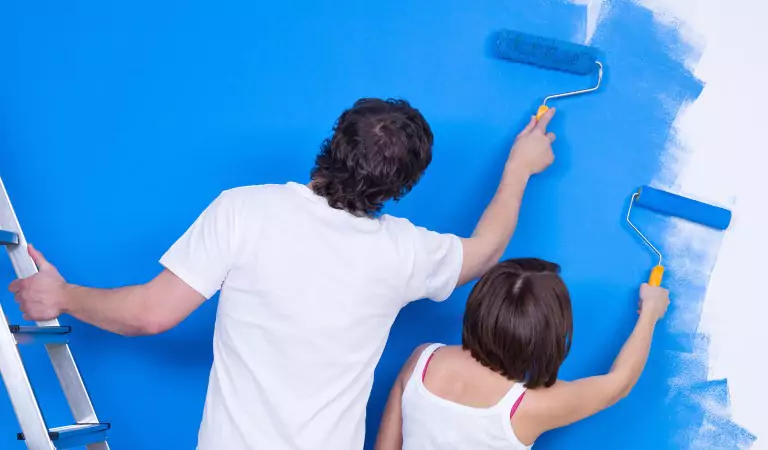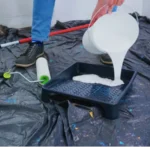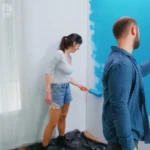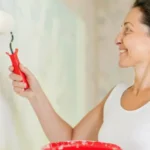
Tips To Reduce Health Hazards When Painting Your Walls
Repainting walls is one of the best ways to bring life back into your house or apartment. You can change the accent, ambient and main colours to give your home a new look and feel.
However, you must exercise caution while repainting because without using safe paints or knowing the history of the previous paint can lead to health hazards. Before 1970, many Australian homes had lead paint, which is life-threatening due to lead poisoning.
Therefore, by 1997 the recommended amount of lead in domestic paints was only 0.1%. Unfortunately, it doesn’t mean you cannot get exposure. Lead in paint can cause positioning when it is damaged or disturbed. Also, exposure to lead is not the only health hazard you can face while DIY painting.
One of the best ways to avoid health hazards is to hire professional painters in Australia to inspect your home and paint the walls with safe products and techniques. However, here is your complete guide to painting walls without health hazards when doing it yourself. Have a look.
Risks While Painting
Paint work, like any other labour-intensive activity, involves certain risks. Knowing them is crucial for risk management and preventing health hazards. Thus, listed below are common risks associated with painting household walls.
• Exposure to volatile organic compounds
• Falls, tripping, slipping and other injuries due to contact with objects.
• Fire hazards due to flammable products
• Contact with harsh chemicals that cause burns on the skin or irritate your eyes, nose, throat and lungs.
Tips To Reduce Health Hazards When Painting Household Walls
Hiring a professional painting service in Australia is a wise and practical solution to remain protected from paint fumes and other health hazards. Since the professionals have the expertise, experience and the right equipment, they can do paint work expertly without causing household members hassle or stress. However, if for any reason you don’t want professional help and can paint your home’s walls yourself, keep in mind the following tips.
Better to be safe than sorry, which is why you must wear personal protective equipment. The prime objective of PPEs is preventing contact with paint products, VOCs and fumes. Therefore, before painting, you must have the following things on hand.
• Gloves
• Protective eyewear
• Masks
• Coveralls and shoe covers
• A hard hat to wear when working at heights
• Anchor straps, harnesses and retractable for fall arrest
• Fire extinguishers
Quality paints and primers with low-VOC formulas are readily available in markets of Australia. They may cost more than paints with traditional formulations, but paying more for reducing health risks for yourself and your family members is a good bargain. Another advantage of low-VOC paints is they are easy to clean and dispose of. Therefore, avoid buying traditional latex paints and conventional primers.
Only paint when the windows and doors of a room are open, and the ventilation is proper. You can inhale fumes from primers and paints, causing nausea, headaches, dizziness and other health issues. Professional painters in Australia always take this precaution because they understand exposure to paint fumes is a serious health hazard.
Avoid electrocution or short-circuits while painting by securing electrical outlets with painter’s tape. Additionally, cover open sockets and check the house for open wires to ensure you are not exposed to electricity or the paint doesn’t drip on the open sources. Turn off the main electrical supply when you cannot secure an electrical outlet.
Slipping on slick paint or primer is a common painting injury. You can splatter paint unknowingly on the floor and later slip on it while moving. This injury can happen even if you cover the floor with a tarp.
Moreover, you can get your shoes dirty with paint and slip while climbing down or up ladders or step stools. Therefore, make sure to wear anti-skid shoes while prepping and painting. Additionally, keep cleaning spills as soon as you see them to minimise the risk of slipping.
Painting walls requires you to move around the entire room and since you have to be careful of spills or ruining the paintwork, paying attention to the floor is challenging. Therefore, you can trip and fall if the floor is cluttered with cans, rollers, brushes, tape, scrapers, or other materials. Make sure to stack all necessary supplies in a corner or a caddy.
Furthermore, after you are done painting for the day, keep painting tools safe and ready for the next day by wrapping the rollers and brushes with a wet towel and storing them in a plastic bag. Cover the paint tub with a plastic sheet, then tape around the edges to keep the paint fresh.
The Bottom Line
Painting walls in your home is not a risk-free activity, which is why if you lack the expertise or confidence to do it yourself, always seek the assistance of a professional painter in Australia. However, if you want to DIY paint walls, keep the insights in this guide in mind to reduce health hazards.
- 17 Jul, 2025
- 23 Jun, 2025
- 05 May, 2025
- 04 Mar, 2025
- 27 Dec, 2024
We have a proven track record of providing high-quality and customised painting services at the best price. Call us for more details.




